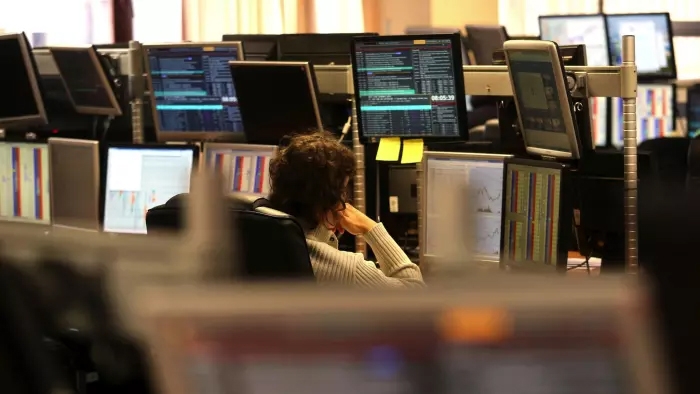
US politics has been a key driver of markets again with the inquiry into impeachment against President Trump remaining a focus. Markets have reversed course from yesterday’s price action, seeing US equities higher, US yields higher and a broadly based recovery in the USD. The NZD is back decisively below 0.63, with the post RBNZ OCR Review blip proving to be fleeting.
The removal of Trump from office via impeachment is looking less likely today after the release of a transcript of his call with Ukrainian President Zelensky, which is at the heart of the inquiry. In the call Trump asks Zelensky to work with Trump’s attorney-general and personal lawyer to investigate Biden and his son. But there is no direct evidence of Trump saying he would withhold foreign aid to add pressure to Zelensky, even if he frequently mentions how the US spends a lot of effort and time helping Ukraine. The Department of Justice reviewed the call and determined that there was no campaign finance violation and that no further action was warranted. The Democrats might still proceed with the case for impeachment, but it’s a politically risky strategy and markets already seem to have “moved on”.
With no smoking gun in the transcript, the S&P500 is currently up 0.5% and the US 10-year rate is up 8 bps to 1.73%, the latter fully reversing yesterday’s price action. In economic data, US new home sales were much stronger than expected, continuing the run on housing market data beating expectations, with stronger activity evidently fuelled by lower mortgage rates.
Trump did his best to deflect attention from the impeachment inquiry by creating a positive vibe on US-China trade relations. He said that a China deal “could happen sooner than you think…we are getting closer and closer…there is a good chance US and China will make a deal”.
Chicago Fed President Evans (voter) indicated that his rate forecast doesn’t include another cut, characterising the two rate cuts so far as a mid-cycle adjustment. He said that the economic fundamentals were good and that the Fed was “pretty well positioned now to see how things play out from here”. Fed Governor Brainard’s comments were more cautious about the outlook, seeing downside risks from the uncertainties about global growth and business investment.
By yesterday afternoon, the USD looked to be on a path to reverse earlier weakness and nothing has changed overnight to change that trend. USD indices are up 0.6-0.7% for the day, more than recovering the previous day’s losses.
The NZD showed a fleeting move higher after the release of the RBNZ’s OCR Review, climbing from 0.6315 to almost as high as 0.6350, but it has reversed course, driven by the stronger USD. In fact, the NZD has underperformed since the local close, down about 0.8% to 0.6270. After the shock 50bps cut to the OCR to 1.0% in August, the RBNZ believed that new information did not warrant a significant change to the monetary policy outlook. However, an easing bias remained evident with the comment “there remains scope for more fiscal and monetary stimulus, if necessary, to support the economy and maintain our inflation and employment objectives”. The uncertainties the Bank outlined in the minutes of the meeting were weighed to the downside – global trade, geopolitical tensions, low business confidence, a possible delay to government spending, and lower inflation expectations in response to ongoing low inflation. The list of upside risks was much smaller, noting upside potential for labour and import costs.
Going into the statement, the rates market saw a small chance of a rate cut and was geared towards a slightly more dovish statement, so short-term rates nudged higher after the release. The 2-year ended the day up 2bps to 0.96%. A 25bps rate cut in November is widely anticipated, even if the probability of that nudged a bit lower, from 83% to 76% on OIS pricing. The curve flattened considerably as long rates were driven by global forces, seeing the 10-year swap rate end the day down 4bps to 1.21%. Higher US rates overnight should see some reversal of that curve move.
GBP has also underperformed, as Boris Johnson was forced to return to the UK after losing his bid to suspend Parliament. The EU said that the British government’s latest ideas for the post-Brexit Irish Border aren’t acceptable. GBP is down over 1% to 1.2350.
AUD, EUR and JPY are all down by about 0.7% for the day against the USD. Bloomberg reports that the EU is considering imposing tariffs on more than $4b of US exports, citing as justification a 22-year old WTO dispute over prohibited subsidies. Sources indicated that the tariffs would ostensibly be to retaliate against the duties the US is poised to impose on up to $7b of EU exports because of subsidies to Airbus.
BoJ Governor Kuroda continued to keep alive the possibility of a rate cut next month, unwilling to rule it out and reiterating his view that short-term rates had a more powerful impact on the economy than long-term rates. Japan’s 5-year JGB fell to a record low of minus 0.40% before closing the day down 3bps to minus 0.39%.
In the day ahead, more Fed speakers are out in force while the ECB’s Draghi will be giving a speech tonight. Nothing on the economic calendar looks potentially market moving.

We welcome your comments below. If you are not already registered, please register to comment
Remember we welcome robust, respectful and insightful debate. We don't welcome abusive or defamatory comments and will de-register those repeatedly making such comments. Our current comment policy is here.